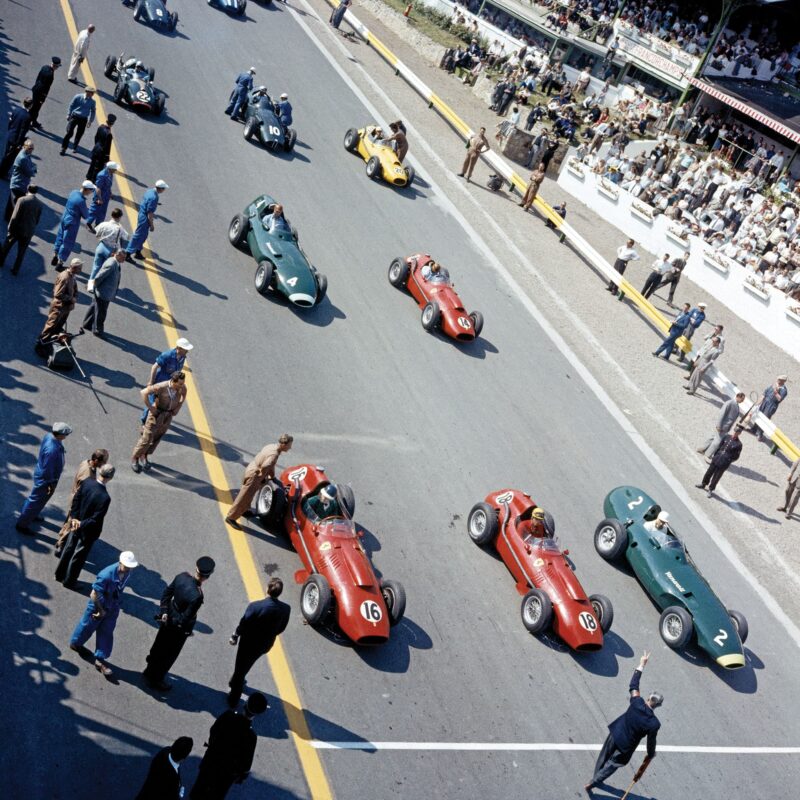1958 F1 season: when gentleman Moss missed out on the world title
Stirling Moss and Vanwall pioneered the rear-engined future of F1, but a sporting gesture crowned Mike Hawthorn 1958 world champion

Getty Images
Faulty steps and tragic dark shadows cast the still-young world championship in a peculiar and troubled light, especially from this distance of 66 years. This was also a season that carried Formula 1 further from its pre-war grand prix roots and edged it towards something more akin to what we know today.
For the first time a constructors’ cup was awarded, just the leading car from each manufacturer claiming points, accumulated from the best six scores from the 11 rounds, but not including the Indianapolis 500. The awkward anomaly of America’s great race counting towards the drivers’ championship wouldn’t be scratched until after 1960. There was also a key format change: race duration was reduced to between 185 and 310 miles or a minimum of two hours.
But F1 was still a long way from a sheen of uniform professionalism. Confusion over whether the season opener in Argentina would even go ahead meant neither Vanwall nor BRM sent cars on the last ship bound for Buenos Aires. A diplomatic incident triggered by the Royal Automobile Club protesting the race’s inclusion in the world championship was only resolved in the Argentine Grand Prix’s favour 11 days after it happened. But with four entries delayed on the journey, the world championship’s smallest field took the start: just 10 cars. Nevertheless, it was a weighty landmark, thanks to Stirling Moss’s tyres-to-the-canvas victory in Rob Walker’s Cooper – the first post-war GP victory for a rear-engined car. Here was the future.

Front row from left: Mike Hawthorn, Luigi Musso (both Ferrari) and Stirling Moss (Vanwall), 1958 Belgian Grand Prix
Getty Images
But not yet. In hindsight, 1958 marked a last hurrah for traditional GP racing. Front-engined beasts from Vanwall, Ferrari and Maserati Mike Hawthorn look like dinosaurs compared to the nimble new-age miniatures that would follow.
In Vanwall’s British Racing Green corner were Moss, Tony Brooks and Stuart Lewis-Evans versus and Peter Collins (plus poor, outnumbered Luigi Musso) in Ferrari red. Juan Manuel Fangio announced his retirement mid-season, but by then the handing of the baton had passed, all too obviously: Moss was a clear head above his rivals as F1’s new master.
That further victories at Zandvoort and the new races in Porto and Casablanca didn’t crown him world champion is irrelevant. Hawthorn, with his singular victory at Reims, pipped him by one point. How Moss stuck up for his friend for rejoining the track in Portugal in the wrong direction following a spin, reinstating him to second place, made all the difference. Sportsmanship? Moss didn’t think twice. He was a world away from the whatever-it-takes mentality that would consume F1. But no wonder Stirling’s craving for the championship lost its edge thereafter.
Then there was the darkness. Musso lost at Reims. Collins in his chase of the brilliant Brooks at the Nürburgring, in the wake of his cherished British GP win. Lewis-Evans claimed by appalling burns sustained in Morocco. Then Hawthorn, the champion snuffed out in a senseless road accident near Guildford early in 1959. What a way to turn the page.